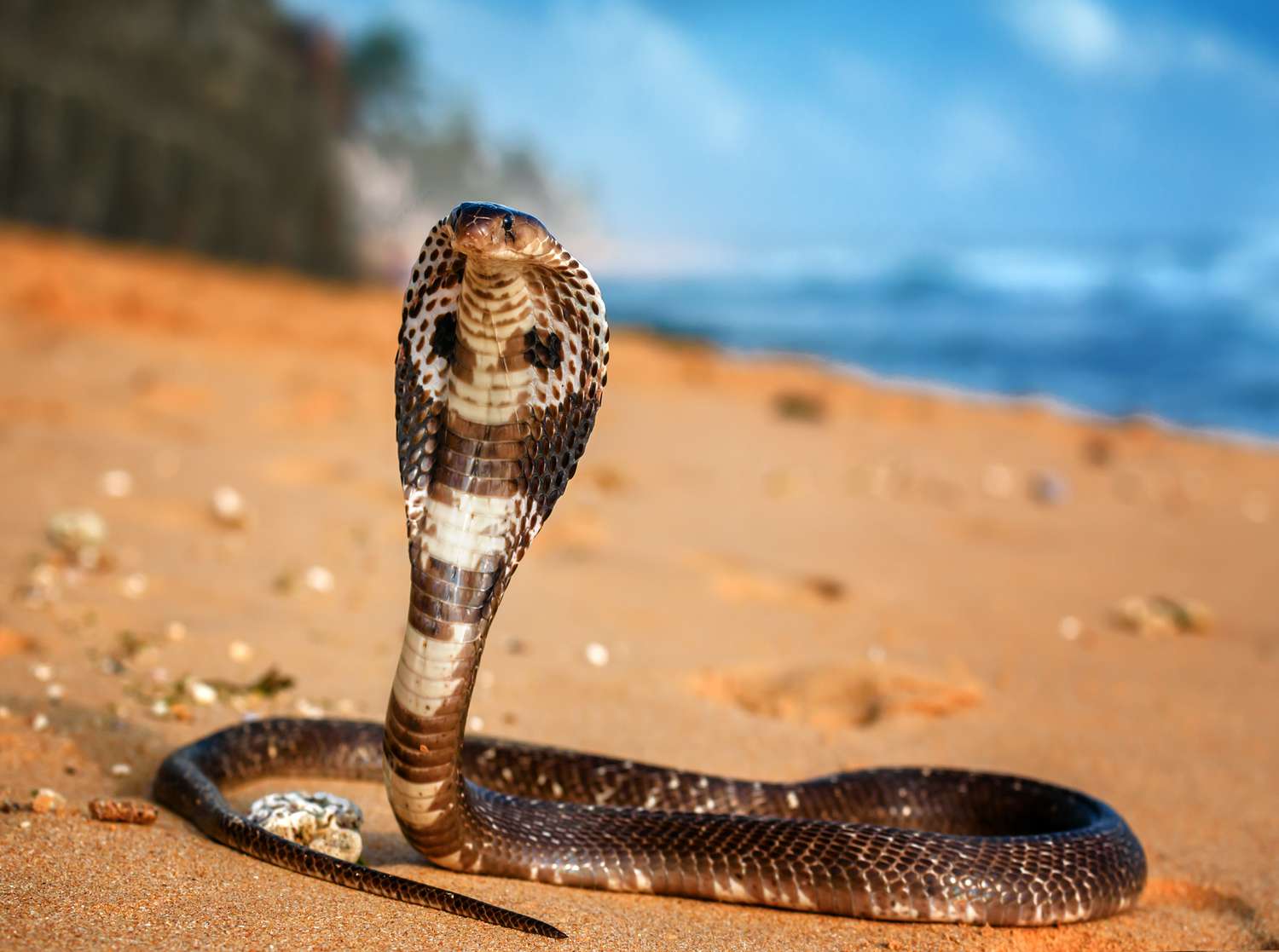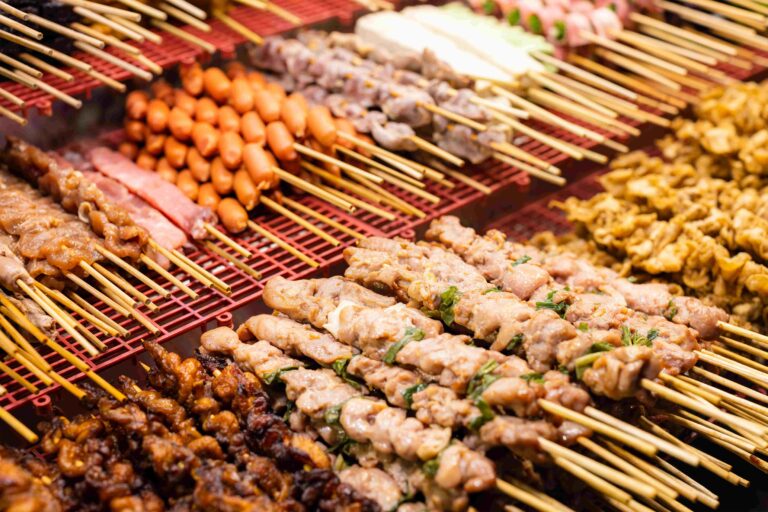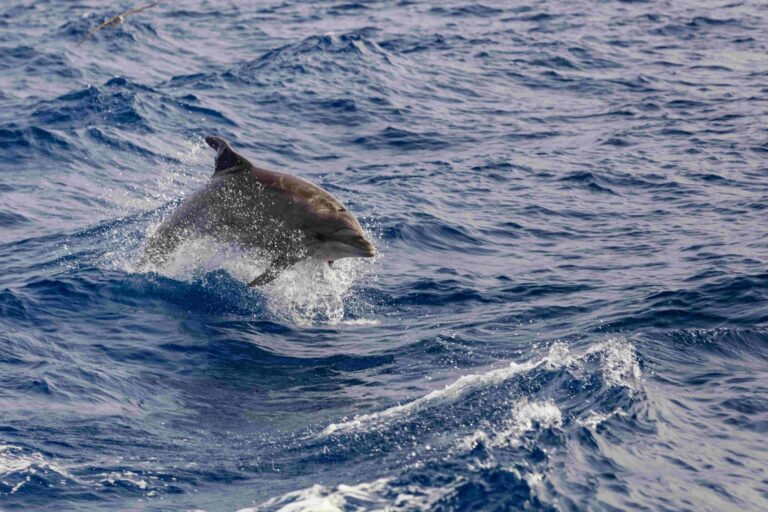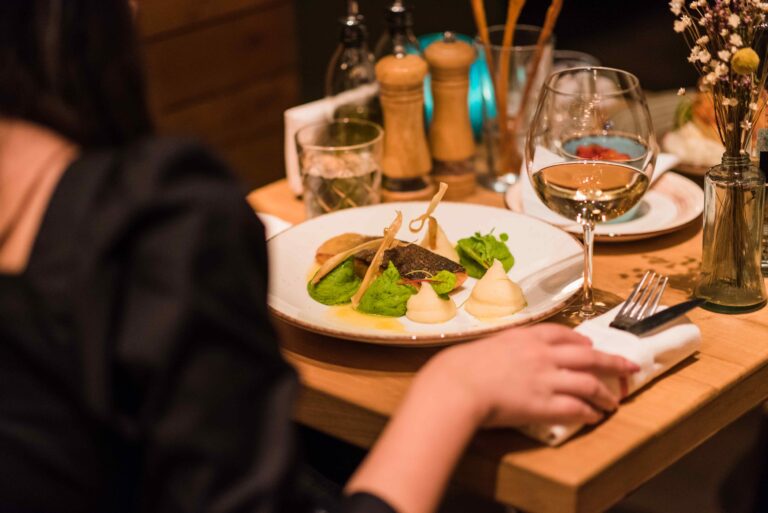Bali is a tropical paradise, sure, but with all paradise comes things that like to bite – well, not so much bite, but just scare people, mainly.
We mean snakes, of course, and Bali is home to several dangerous snakes, including the king of them all, the king cobra.
But don’t worry, you’re in safe hands. In this guide, we’ll run you through everything you need to know about king cobras in Bali, your chances of seeing one, and how to act if you do.
This guide comes with photos, so if you’re not a fan, then beware!
About The King Cobra
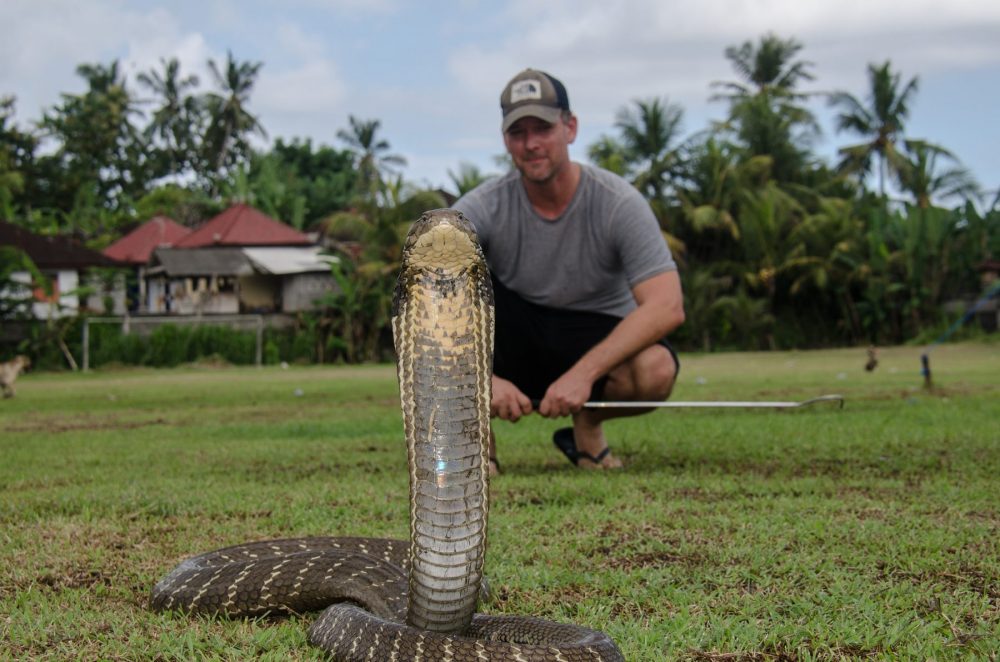
The king cobra (Ophiophagus hannah) is the world’s longest venomous snake, reaching lengths of up to 5.8 metres. They are found in the forests and grasslands of India, South China, and South East Asia, including, of course, Bali.
They are highly intelligent creatures, renowned for feeding mostly on other snakes, which they hunt with a combination of cunning, speed and strength. They also like to feed on lizards and rodents.
Unlike many snakes, they build nests and fiercely guard their eggs opposed to laying, burying and abandoning them. Another example of how supreme their intelligence is in the world of snakes.
Their venom is highly neurotoxic to humans, and any bite needs to be taken seriously. Of course, bites are rare as these snakes are actually quite shy; of course, as with many animals, human encroachment into their natural environment has forced them to share their space with us. But, more on that later.
How Common Is The King Cobra In Bali?
Known locally as Ular Raja Kobra, this snake is famous, feared, and respected in Bali, but that doesn’t mean you’ll be tripping over them. In fact, sightings are rare, even for locals. These snakes are highly elusive and tend to stay well away from people.
Over the years, as Bali’s forests and farmlands have become more developed, humans have slowly pushed into their natural territory. The king cobra, being the intelligent creature it is, has simply adapted by keeping an even lower profile. They’ve become more cautious and even shyer around humans.
So, while they’re out there, the chances of a tourist seeing one in the wild are next to none, unless you’re at a zoo or a wildlife rescue centre.
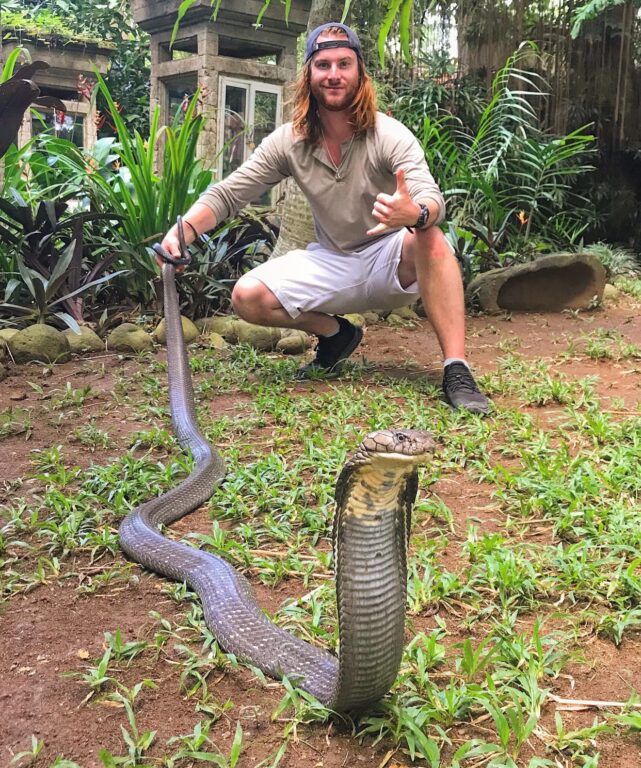
King Cobra’s Natural Habitat
In Bali, king cobras prefer quiet, undisturbed areas. They’re most at home in lowland forests, bamboo groves, and around rivers or streams where prey is plentiful. You might also find them near coconut plantations or rural areas close to dense vegetation, especially where rats and other snakes are common.
They spend much of their time hidden under fallen logs or thick ground cover, emerging mainly to hunt or bask. These habitats once stretched freely across much of the island, but as villages, rice fields, and roads expand, their range continues to shrink.
Still, Bali’s remaining forests and protected areas, like those in West Bali National Park, offer ideal conditions for these secretive giants to survive largely undisturbed.
What To Do If You See A King Cobra
Number one, stay calm.
If you ever encounter a cobra in Bali, the most important thing is not to panic. Do not make any sudden movements, and slowly back away to a safe distance of at least two to three metres.
The king cobra is easy to identify compared to most venomous snakes in Bali. They have a distinct head shape that’s broad and flattened, with a smooth, olive-brown to dark brown body that can appear lighter or darker depending on the light.
When threatened, they raise a large section of their body off the ground, spread their hood, and fix their eyes on you with incredible focus; so if you see this display, take it seriously.
It’s worth shielding your eyes a little as you move away, just in case you’ve mistaken it for the smaller but related spitting cobra, which can accurately spray venom several feet. Fortunately, king cobras don’t spit, but caution never hurts.
As with most venomous snakes, they are not aggressive by nature. They’re shy, elusive, and prefer to escape rather than fight. But if they feel cornered or threatened, they will defend themselves, and that’s when things can get dangerous. They’re fast, strong, and intelligent, and they don’t bluff for long.
If a king cobra is found near a home or in a village, don’t try to handle it yourself. Call a professional snake catcher or wildlife rescue team to remove it safely.
For anyone trekking or sleeping out in the jungle or rice paddies, simple snake-proofing is worth bearing in mind.
Always zip up tents, keep your sleeping bag sealed when not in use, and shake out shoes and clothing before putting them on (this avoids snakes and bugs, both big and small). Avoid walking barefoot in tall grass or after dark, and use a bright light to scan your path. Always keep a first aid kit handy.
King cobras are fascinating creatures and vital to the ecosystem, but giving them space and respect is the best way to stay safe.
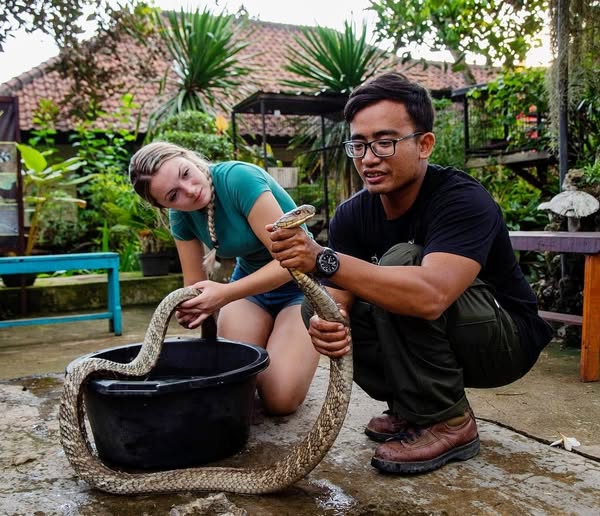
What To Do If Bitten By A King Cobra
Now, the scary part. While the chances of you being bitten are extremely rare, there is always that chance, and it’s best to be prepared.
A king cobra’s venomous bite delivers a powerful neurotoxin that can cause blurred vision, dizziness, nausea, and severe pain around the bitten limb. In some cases, internal bleeding or paralysis may occur. It’s extremely painful and potentially lethal – fast action is essential.
If you’re ever unlucky enough to become a snake bite victim, don’t panic. Keep as still and calm as possible; running or moving too much increases your heart rate, speeding up the spread of venom. Do not use a tourniquet, and do not try to suck out the venom. Instead, call for help immediately, or get someone to contact emergency services while you stay still.
Treating king cobra bites requires anti-venom and professional medical care. If you’re out in the countryside or jungle, a pressure bandage around the bite can help slow the venom’s movement while you wait for help to arrive.
King cobras rarely bite people unless threatened, so staying calm and giving them space is always the best snake bite treatment of all.
The King Cobra In Balinese Culture
In Balinese culture, the king cobra isn’t just another snake; it’s seen as a sacred guardian of the land. It’s linked to Naga Basuki, the great serpent-dragon believed to protect Bali’s volcanoes and keep balance between the physical and spiritual worlds.
In Balinese Hinduism, the cobra also connects to Antaboga, the serpent god of creation, and is thought to symbolise fertility, protection, and spiritual power. Spotting one can be taken as a sign of good fortune or a call for protection, and offerings are sometimes made to honour the spirit it represents.
Other Snakes In Bali
There are other venomous snakes (and non-venomous snakes) in Bali – both land snakes and sea snakes – and while it’s rare you’ll encounter them, it’s worth knowing what’s out there. These snakes usually keep to themselves, but knowing their names can help with snake identification if you happen to cross paths.
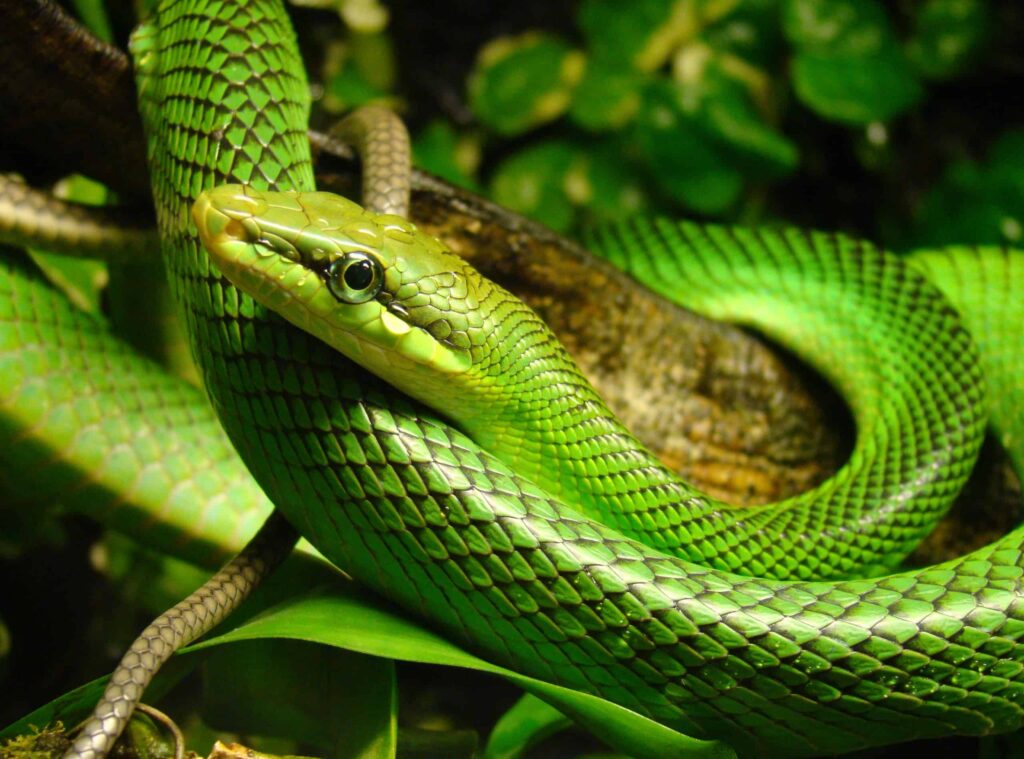
- Island Pit Viper – Often seen in western Bali’s thick vegetation, this snake has a vibrant green body and a blunt tail. It’s one of the most venomous snakes on the island, but it usually strikes only if disturbed, as such pit viper bites are uncommon.
- Banded Sea Krait – Also known as the yellow-lipped sea krait. A common but venomous sea snake with a paddle-shaped tail, easily recognised by its bold black-and-white bands. They have some of the most powerful venom in the world, but bites are extremely rare.
- Banded Krait – Also known as the blue krait and malayan krait. This dangerous species can be aggressive; not only that, krait bites are potentially lethal. In reality, these snakes are rarely encountered; they are nocturnal and tend to hide during the day.
- Javan Spitting cobra – Known for its ability to spray venom towards the eyes of anything it feels threatened by. Encounters are very rare, but if you do come across one, keep a safe distance and protect your eyes.
- Asian coral snake – Brightly coloured but shy and secretive, this small snake prefers to stay hidden under leaves or logs. It’s best admired from afar if you happen to spot one.
- Green snakes – Other green snakes – not the pit viper- are non-venomous snakes often found in rice terraces and gardens. They’re slender, harmless, and feed on insects and small frogs.
- Rat snake –Rat snakes – The black copper rat snake and the oriental rat snake are both non-venomous and harmless, despite their intimidating size and speed. They’re actually two unrelated but common snake species, both of which help control rodent populations and are best left alone if encountered.
- Reticulated Python – One of the largest snakes in the world, found across Bali’s tropical rainforests and rural areas. Non-venomous, it kills prey by constriction and can reach impressive lengths. These snakes rarely pose a threat to humans and usually avoid confrontation
Re-Classification Of The Species In Bali!
Something to note at the end, for those biology geeks out there:
Traditionally, there is one species of King Cobra (Ophiophagus hannah). Recent studies, however, suggest there are in fact four species: Northern king cobra (O. hannah), Sunda king cobra (O. Bungarus), Western Ghats king cobra (O. Kaalinga), and Luzon king cobra (O. Salvatana).
If this reclassification is accepted, the species present in Bali would most likely be the Sunda king cobra (O. bungarus), rather than the Northern king cobra (O. hannah).
So while many older sources still call Bali’s king cobra Ophiophagus hannah, modern taxonomy suggests it might belong to the O. Bungarus lineage instead, a detail worth noting for any serious guide.
FAQs
What’s The Difference Between Venomous And Poisonous Snakes?
Venomous snakes, like cobras, inject venom through their fangs, while poisonous animals are only harmful if touched or eaten.
In Bali, most snake bites come from people accidentally stepping on or trying to handle snakes they’ve encountered, so the best thing to do is simply give them space.
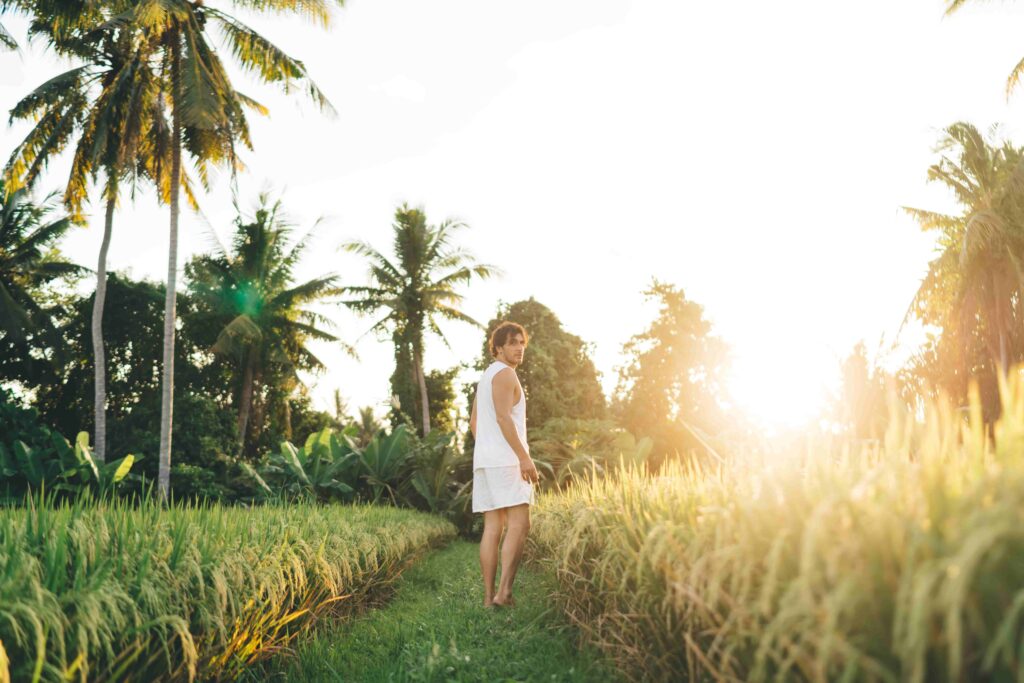
Is It Safe To Walk In The Rice Fields?
Yes, it’s generally safe, but it’s also where you’re most likely to encounter snakes, usually hunting frogs and insects. Always wear shoes, use a light at night, and keep an eye out after heavy rain, as snakes are more active during the wet season.
Are There Snake Rescues Or Snake Removals In Bali?
Yes. If you find a snake in your villa or garden, don’t panic. Call a local rescue centre or a professional snake handler; they’ll remove it safely and release it back into the wild. Many of these teams work closely with wildlife groups to protect both people and the snakes themselves.
Are All Snakes In Bali Dangerous?
Not at all. Most are non-venomous or only mildly venomous; deadly snakes are rarely spotted, and imported snakes are very rare outside of zoos or private collections. Many of Bali’s local snakes actually help control pests, and they prefer to avoid humans whenever possible.
Why Do Snakes Sometimes Enter Villages Or Houses?
As humans arrived and developed more land, snakes lost much of their natural habitat. Some follow prey like rats into rural areas, especially during the rainy season.
It’s not aggression, just survival. Keeping your home clean and sealing small gaps helps prevent unwanted visitors.
Final Thoughts On King Cobra Bali
The biggest venomous snake in Bali may sound scary and intimidating, but the truth is that king cobras are far more interested in avoiding people than attacking them. Most visitors to Bali will never see one outside of a photo or wildlife centre, and that’s exactly how both sides prefer it.
These snakes play an important role in keeping Bali’s ecosystems balanced, helping control populations of other snakes and small animals. They’re powerful, intelligent, and deserve respect, not fear.
So if you ever find yourself exploring Bali’s jungles or rice paddies, just remember: you’re sharing the island with some incredible wildlife. Keep your distance, stay calm, and let nature do its thing.

